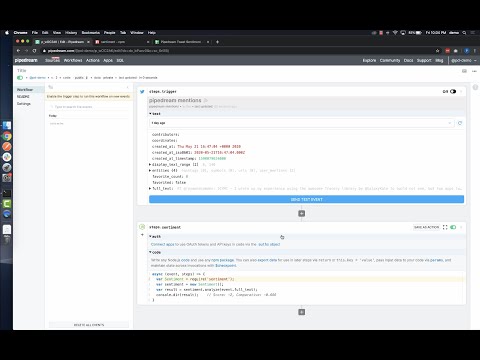What do you want to automate
with Google Sheets and Moxie?
Prompt, edit and deploy AI agents that connect to Google Sheets, Moxie and 3,000+ other apps in seconds.
Trusted by 1,000,000+ developers from startups to Fortune 500 companies
Popular Google Sheets and Moxie Triggers#
Popular Google Sheets and Moxie Actions#
Add a single row of data to Google Sheets. See the documentation
Add multiple rows of data to a Google Sheet. See the documentation
Get all values or values from a range of cells using A1 notation. See the documentation
Overview of Google Sheets#
The Google Sheets API allows for the creation, reading, updating, and deletion of data within Google Sheets, enabling a robust platform for spreadsheet management and data manipulation. Through Pipedream, you can craft serverless workflows that respond to various triggers, such as webhook events, emails, or scheduled times, to interact with Google Sheets. This synergy can automate reporting, synchronize data across applications, manage inventory, track leads in a CRM, or even conduct survey analysis by updating and retrieving sheet data on the fly.
Connect Google Sheets#
import { axios } from "@pipedream/platform"
export default defineComponent({
props: {
google_sheets: {
type: "app",
app: "google_sheets",
}
},
async run({steps, $}) {
return await axios($, {
url: `https://www.googleapis.com/oauth2/v1/userinfo`,
headers: {
Authorization: `Bearer ${this.google_sheets.$auth.oauth_access_token}`,
},
})
},
})
Overview of Moxie#
The Moxie API provides tools to facilitate customer engagement through chat and messaging services. With this API, you can integrate real-time chat capabilities, manage conversations, and leverage customer data to provide personalized support. On Pipedream, you can use the Moxie API to create automated workflows that respond to events in Moxie, such as new messages or chat engagements, and connect them with other services to enhance customer support, automate responses, and streamline communication processes.
Connect Moxie#
import { axios } from "@pipedream/platform"
export default defineComponent({
props: {
moxie: {
type: "app",
app: "moxie",
}
},
async run({steps, $}) {
return await axios($, {
url: `${this.moxie.$auth.base_url}action/clients/list`,
headers: {
"X-API-KEY": `${this.moxie.$auth.api_key}`,
},
})
},
})
Related Videos#



Community Posts#


